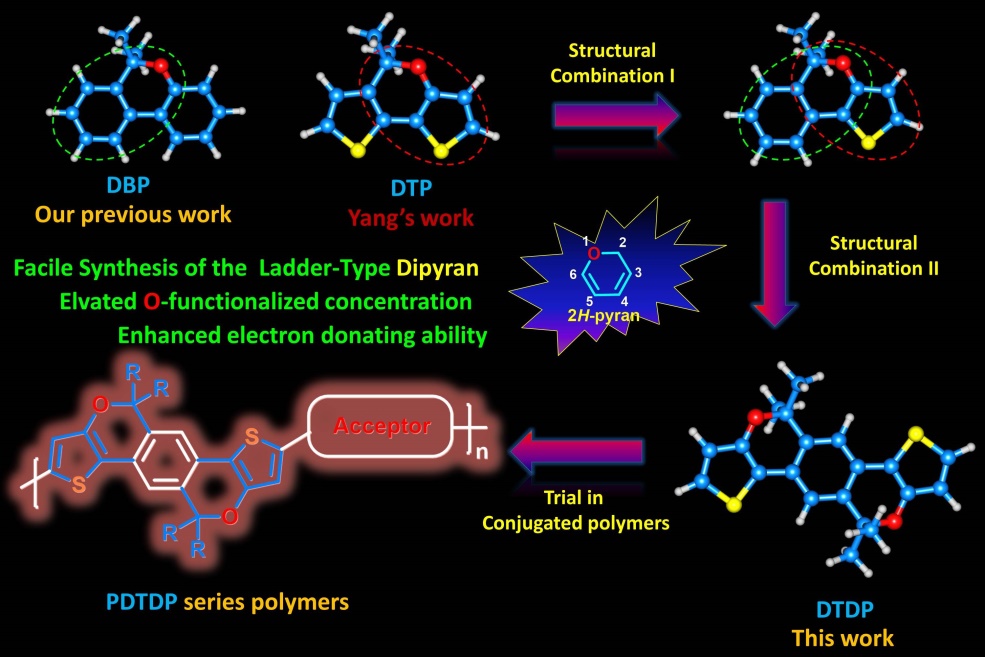Ladder type fused aromatic building blocks have been widely applied in organic photovoltaics, but the relative narrowed absorption spectra of polymer material would restrict the elevation for the power conversion efficiency (PCE). Recently, Associate Professor Song Jinsheng and Professor Wang Hua from Research Group for Organic Functional Materials reported a novel dipyran building block (DTDP). Accompany by the introduction of oxygen atoms into the conjugated molecular skeleton, the absorption spectra are extended and the main chain regularity is improved. After the device optimization, the PCE = 7.26% was obtained and the research work has been published at ACS Appl. Mater. Interfaces 2018, 10, 13931-13940.(SCI Q1,IF = 7.504)
Previously, the researchers from this group have developed the mono-pyran based polymer donors (Dyes and Pigments 2015, 122, 184-191;ACS Appl. Mater. Interfaces, 2016, 8, 31348–31358) and dipyran based nonfullerene acceptors (Nano Energy 2018, 45, 10-20;Adv. Funct. Mater., 2018, 28, 1705927). The recent published work is a good continuation of the previous work and all results indicated that pyran is a promising building block for high efficiency photovoltaic materials.
Associate Professor Jinsheng Song, Professor Hua Wang of Henan University, and Professor Zhishan Bo of Beijing Normal University are the corresponding authors of the research. Miao Li and Yijing Guo are the co-first authors. The study was funded by the National Natural Science Foundation of China (U1704137, 21404031) and the Program of Henan Provincial for Young Teachers.
2018-06-27
